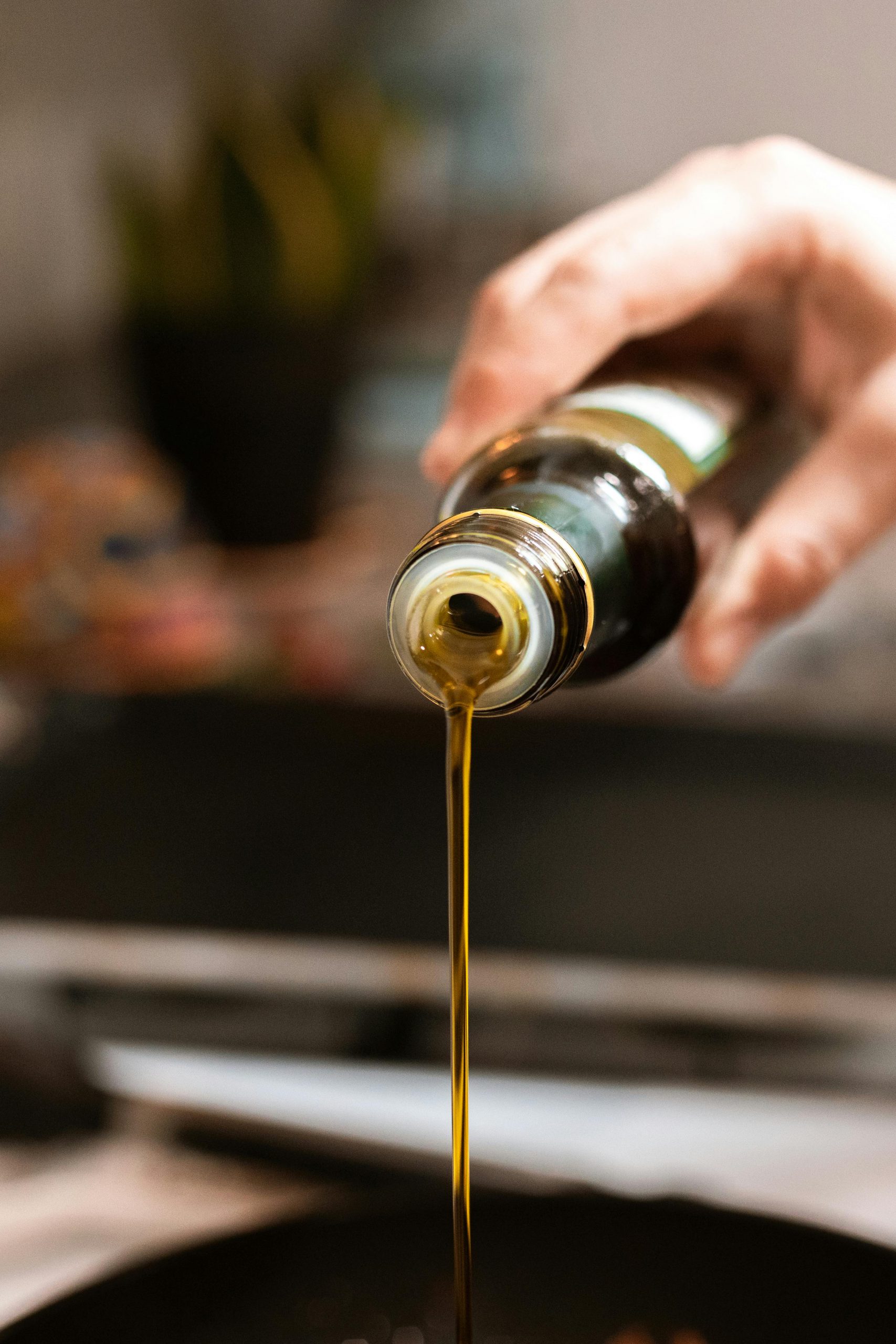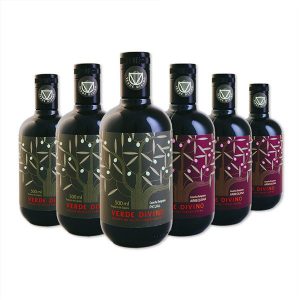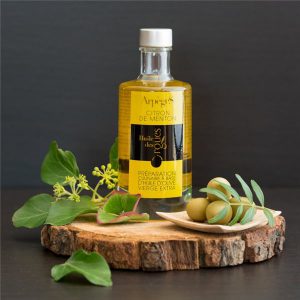
- Readers Rating
- No Rating Yet!
- Your Rating
Extra virgin olive oil (EVOO) is one of the pillars of the Mediterranean diet and an essential ingredient in Spanish and global cuisine. Its consumption not only adds flavor to dishes but also offers health benefits thanks to its healthy fats, antioxidants, and vitamins. However, not all olive oils are the same, and recognizing a good extra virgin olive oil requires attention to several factors. In this article, we explain how to differentiate a quality oil, the different types available, and the most prominent producing regions.
What does “extra virgin” mean?
Extra virgin olive oil is oil obtained directly from olives using mechanical processes, without undergoing chemical treatments or refining. To be considered extra virgin, the oil must meet certain standards for taste and acidity:
-
Maximum acidity of 0.8%: Measured in free oleic acid, this indicates the purity of the oil and its lack of defects.
-
Taste and aroma: It should have a balanced taste, with no unpleasant bitterness or olfactory defects.
-
Natural processing: It is only obtained through cold pressing or centrifugation, without additives or chemicals.
EVOO is valued for its fruity flavor, fresh aroma, and ability to enhance any dish, from salads to stews and desserts.

How to recognize a good EVOO
Recognizing a good extra virgin olive oil isn’t just about reading the label. Here are some practical tips:
1. Sensory analysis
-
Smell: A good EVOO has a fresh, fruity, and herbal aroma. You may notice notes of green olive, apple, freshly cut grass, or almond.
-
Taste: When tasting it, you should feel a balanced flavor between sweet, bitter, and peppery. The bitterness and pepperiness are positive characteristics, as they indicate the presence of natural antioxidants.
-
Color: While color is not a definitive indicator of quality, green and golden tones typically reflect freshness and a good harvest.
2. Reading labels
-
Denomination of origin: Look for oils with protected designation of origin (PDO), which guarantees their origin and quality.
-
Harvest date: Unlike the bottling date, the harvest date indicates when the olives were picked. A fresh oil is usually more aromatic and healthier.
-
Olive variety: Some varieties, like Picual, Arbequina, or Hojiblanca, offer distinct flavor profiles. Knowing the variety helps you choose based on your culinary preferences.
3. Packaging and storage
-
Dark packaging: EVOO should be stored in dark bottles to protect it from light, which degrades its properties.
-
Temperature: Store it in cool places away from prolonged heat to maintain its freshness and flavor.
-
Producer transparency: Trustworthy brands clearly indicate the origin, variety, and extraction method of the oil.

Types of Olive Oil
-
Extra virgin olive oil (EVOO): The highest quality oil, obtained through mechanical methods, with no flavor defects and a maximum acidity of 0.8%.
-
Virgin olive oil: Also obtained mechanically, but it may have slight sensory defects and a maximum acidity of 2%.
-
Refined olive oil: Obtained from defective virgin oils through chemical processes, losing part of its flavor and healthy properties.
-
Olive oil (blend): Combines refined oil with virgin oil to restore some flavor, but does not reach the quality of extra virgin.
For those seeking flavor and health benefits, EVOO is the recommended choice.
Spain’s Leading Olive Oil-Producing Region
Spain is the largest producer of olive oil in the world, and within the country, Andalusia is the leading region for olive oil production. Provinces like Jaén, Córdoba, Granada, and Seville concentrate the majority of the production, known for their diverse varieties of olives and protected designations of origin.
-
Jaén: Known as the “world capital of olive oil,” it primarily produces Picual variety oil, which is characterized by an intense flavor and slight pepperiness.
-
Córdoba and Granada: Known for varieties like Hojiblanca and Picual, producing oils with fruity and balanced aromas.
-
Seville: Produces Arbequina and other varieties with milder and sweeter flavors.
Andalusia combines tradition, Mediterranean climate, and modern pressing techniques, ensuring high-quality oils that are internationally recognized.
EVOO from different regions of Spain

Lesser-Known Olive Oil-Producing Countries
While Spain and Italy dominate the global olive oil market, other lesser-known producing countries are gaining reputation:
-
Greece: Famous for its organic olive oil, especially from the Koroneiki variety.
-
Tunisia: One of the main exporters of extra virgin olive oil globally, though less known among international consumers.
-
Portugal: Known for its intense and fruity oils, especially from the Alentejo region.
These countries combine traditional and modern techniques, producing oils that are increasingly appreciated for their flavor and health properties.
Benefits of Choosing a Good Extra Virgin Olive Oil
-
Cardiovascular health: Rich in monounsaturated fatty acids that help reduce LDL cholesterol and protect the heart.
-
Antioxidant properties: Contains polyphenols that fight cellular oxidation and help prevent chronic diseases.
-
Improves digestion: Facilitates nutrient absorption and protects the intestinal mucosa.
-
Versatility in cooking: Enhances the flavor of salads, vegetables, meats, and breads, adding a unique aroma and texture.
-
Durability and conservation: A high-quality EVOO, when properly stored, retains its properties longer, ensuring fresh flavor with every use.
Additionally, choosing an oil with a denomination of origin guarantees that you are supporting local producers and respecting sustainable farming practices.
How to consume EVOO to make the most of its properties
To fully enjoy extra virgin olive oil:
-
Consume it raw: In salads, on toast, or in dips to preserve antioxidants and vitamins.
-
Use it in gentle cooking: For sautéing vegetables or making sauces, avoiding high temperatures that degrade its properties.
-
Pair it with fresh products: Bread, vegetables, or fruits enhance its unique flavor and aroma.
-
Try different varieties: Each olive type offers distinct nuances, from mild and sweet to intense and peppery.
Recognizing a good EVOO requires attention to origin, variety, harvest date, packaging, and sensory analysis. Spain, particularly Andalusia, remains the leading producing region, while countries like Greece, Tunisia, and Portugal stand out for their lesser-known quality. Choosing a high-quality EVOO not only improves the flavor of your dishes but also provides health benefits, supporting sustainable and artisanal production.
To find the best oils and learn more about their characteristics, you can always consult specialized stores and trusted platforms like mentta, where detailed information about the origin, variety, and features of each oil is offered.
If this article from mentta helped you recognize a good EVOO, don’t miss all the culinary articles we publish every week on the mentta blog.

